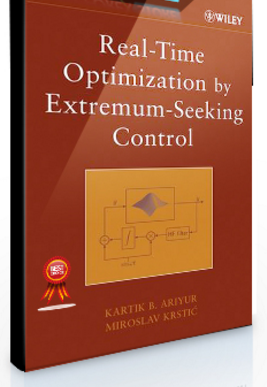Vip-Area
Kartik B.Ariyur – Real-Time Optimization by Extremum-Seeking Control

Kartik B.Ariyur – Real-Time Optimization by Extremum-Seeking Control
Price: $25
Please contact us: – Email: Tradersoffer@gmail -Skype: [email protected]
Visit checkout link: https://salaedu.info/product/real-time-optimization/
Description
An up-close look at the theory behind and application of extremum seeking Originally developed as a method of adaptive control for hard-to-model systems, extremum seeking solves some of the same problems as today’s neural network techniques, but in a more rigorous and practical way. Following the resurgence in popularity of extremum-seeking control in aerospace and automotive engineering, Real-Time Optimization by Extremum-Seeking Control presents the theoretical foundations and selected applications of this method of real-time optimization. Written by authorities in the field and pioneers in adaptive nonlinear control systems, this book presents both significant theoretic value and important practical potential. Filled with in-depth insight and expert advice, Real-Time Optimization by Extremum-Seeking Control: * Develops optimization theory from the points of dynamic feedback and adaptation * Builds a solid bridge between the classical optimization theory and modern feedback and adaptation techniques * Provides a collection of useful tools for problems in this complex area * Presents numerous applications of this powerful methodology * Demonstrates the immense potential of this methodology for future theory development and applications Real-Time Optimization by Extremum-Seeking Control is an important resource for both students and professionals in all areas of engineering-electrical, mechanical, aerospace, chemical, biomedical-and is also a valuable reference for practicing control engineers.Table of Contents
Preface. I: THEORY.- SISO Scheme and Linear Analysis.
- Multiparameter Extremum Seeking.
- Slope Seeking.
- Discrete Time Extremum Seeking.
- Nonlinear Analysis.
- Limit Cycle Minimization.
- Antilock Braking.
- Bioreactors.
- Formation Flight.
- Compressor Instabilities: Part I.
- Compressor Instabilities: Part II.

